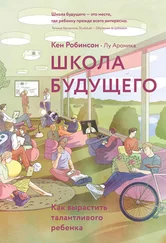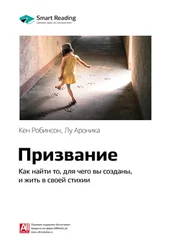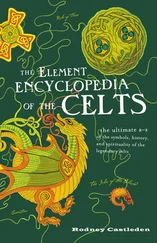Кен Робинсон - The Element
Здесь есть возможность читать онлайн «Кен Робинсон - The Element» весь текст электронной книги совершенно бесплатно (целиком полную версию без сокращений). В некоторых случаях можно слушать аудио, скачать через торрент в формате fb2 и присутствует краткое содержание. Год выпуска: 2009, ISBN: 2009, Издательство: Penguin Books Ltd, Жанр: Самосовершенствование, на английском языке. Описание произведения, (предисловие) а так же отзывы посетителей доступны на портале библиотеки ЛибКат.
- Название:The Element
- Автор:
- Издательство:Penguin Books Ltd
- Жанр:
- Год:2009
- ISBN:9780141911250
- Рейтинг книги:3 / 5. Голосов: 1
-
Избранное:Добавить в избранное
- Отзывы:
-
Ваша оценка:
- 60
- 1
- 2
- 3
- 4
- 5
The Element: краткое содержание, описание и аннотация
Предлагаем к чтению аннотацию, описание, краткое содержание или предисловие (зависит от того, что написал сам автор книги «The Element»). Если вы не нашли необходимую информацию о книге — напишите в комментариях, мы постараемся отыскать её.
The Element — читать онлайн бесплатно полную книгу (весь текст) целиком
Ниже представлен текст книги, разбитый по страницам. Система сохранения места последней прочитанной страницы, позволяет с удобством читать онлайн бесплатно книгу «The Element», без необходимости каждый раз заново искать на чём Вы остановились. Поставьте закладку, и сможете в любой момент перейти на страницу, на которой закончили чтение.
Интервал:
Закладка:
I asked Gillian what happened then. She said her mother did exactly what the psychiatrist suggested. “I can’t tell you how wonderful it was,” she told me. “I walked into this room, and it was full of people like me. People who couldn’t sit still. People who had to move to think. ”
She started going to the dance school every week, and she practiced at home every day. Eventually, she auditioned for the Royal Ballet School in London, and they accepted her. She went on to join the Royal Ballet Company itself, becoming a soloist and performing all over the world. When that part of her career ended, she formed her own musical theater company and produced a series of highly successful shows in London and New York. Eventually, she met Andrew Lloyd Webber and created with him some of the most successful musical theater productions in history, including Cats and The Phantom of the Opera .
Little Gillian, the girl with the high‐risk future, became known to the world as Gillian Lynne, one of the most accomplished choreographers of our time, someone who has brought pleasure to millions and earned millions of dollars. This happened because someone looked deep into her eyes—someone who had seen children like her before and knew how to read the signs. Someone else might have put her on medication and told her to calm down. But Gillian wasn’t a problem child. She didn’t need to go away to a special school.
She just needed to be who she really was.
Unlike Gillian, Matt always did fine in school, getting decent grades and passing all of the important tests. However, he found himself tremendously bored. In order to keep himself amused, he started drawing during classes. “I would draw constantly,” he told me. “And I got so good at drawing that I was able to draw without looking, so that the teacher would think that I was paying attention.” For him, art class was an opportunity to pursue his passion with abandon. “We were coloring in coloring books, and I thought, I can never color within the lines. Oh, no, I can’t be bothered!” This kicked up to another level entirely when he got to high school. “There was an art class and the other kids would just sit there, the art teacher was bored, and the art supplies were just sitting there; nobody was using them. So I did as many paintings as I could—thirty paintings in a single class. I’d look at each painting, what it looked like, and then I’d title it. ‘Dolphin in the Seaweed,’ okay! Next! I remember doing tons of painting until they finally realized I was using up so much paper that they stopped me.
“There was the thrill of making something that did not exist before. As my technical prowess increased, it was fun to be able to go, ‘Oh, that actually looks, vaguely, like what it’s supposed to look like.’ But then I realized that my drawing was not getting much better so I started concentrating on stories and jokes. I thought that was more entertaining.”
Matt Groening, known around the world as the creator of The Simpsons , found his true inspiration in the work of other artists whose drawings lacked technical mastery but who combined their distinctive art styles with inventive storytelling. “What I found encouraging was looking at people who couldn’t draw who were making their living, like James Thurber. John Lennon was also very important to me. His books, In His Own Write and A Spaniard in the Works , are full of his own really crummy drawings but funny prose‐poems and crazy stories. I went through a stage where I tried to imitate John Lennon. Robert Crumb was also a huge influence.”
His teachers and his parents—even his father, who was a cartoonist and filmmaker—tried to encourage him to do something else with his life. They suggested that he go to college and find a more solid profession. In fact, until he got to college (a nontraditional school without grades or required classes), he’d found only one teacher who truly inspired him. “My first‐grade teacher saved paintings I did in class. She actually saved them, I mean, for years. I was touched because there’s like, you know, hundreds of kids going through here. Her name is Elizabeth Hoover. I named a character on The Simpsons after her.”
The disapproval of authority figures left him undeterred because, in his heart, Matt knew what truly inspired him.
“I knew as a kid when we were playing and making up stories and using little figurines—dinosaurs and stuff like that—I was going to be doing this for the rest of my life. I saw grown‐ups with briefcases going into office buildings and I thought, ‘I can’t do that. This is all I really wanna do.’ I was surrounded by other kids who felt the same way, but gradually they peeled off and they got more serious. For me it was always about playing and storytelling.
“I understood the series of stages I was supposed to go through—you go to high school, you go to college, you get a credential, and then you go out and get a good job. I knew it wasn’t gonna work for me. I knew I was gonna be drawing cartoons forever.
“I found friends who had the same interests at school. We hung out together and we’d draw comics and then bring them to school and show them to each other. As we got older and more ambitious, we started making movies. It was great. It partly compensated for the fact that we felt very self‐conscious socially. Instead of staying home on the weekend, we went out and made movies. Instead of going to the football games on Friday night, we would go to the local university and watch underground films.
“I made a decision that I was going to live by my wits. And by the way, I didn’t think it was gonna work. I thought I was gonna be working at some lousy job, doing something that I hated. My vision was that I’d be working in a tire warehouse. I have no idea why I thought it was a tire warehouse. I thought I’d be rolling tires around and then on my break, I’d be drawing cartoons.”
Things turned out rather differently from that. Matt moved to L.A., eventually placed his comic strip Life in Hell with L.A. Weekly , and began to make a name for himself. This led to an invitation from the Fox Broadcasting Company to create short animated segments for The Tracey Ullman Show . During his pitch to Fox, he invented The Simpsons on the spot—he literally had no idea he was going to do this before he went into the meeting. The show evolved into a half‐hour program and has been running on Fox every Sunday for nineteen years as of this writing. In addition, it has generated movies, comic books, toys, and countless other merchandise. In other words, it is a pop culture empire.
Yet none of this would have happened if Matt Groening had listened to those who told him he needed to pursue a “real” career.
Not all successful people disliked school or did badly there. Paul was still a high school student, one with very good grades, when he walked into a University of Chicago lecture hall for the first time. He didn’t realize as he did so that the college was one of the leading institutions in the world for the study of economics. He only knew that it was close to his home. Minutes later, he was “born again,” as he wrote in an article. “That day’s lecture was on Malthus’s theory that human populations would reproduce like rabbits until their density per acre of land reduced their wage to a bare subsistence level where an increased death rate came to equal the birth rate. So easy was it to understand all this simple differential equation stuff that I suspected (wrongly) that I was missing out on some mysterious complexity.”
At that point, Dr. Paul Samuelson’s life as an economist began. It is a life he describes as “pure fun,” one that has seen him serve as a professor at MIT, become president of the International Economic Association, write several books (including the bestselling economics textbook of all time) and hundreds of papers, have a significant impact on public policy, and, in 1970, become the first American to win the Nobel Prize in Economics.
Читать дальшеИнтервал:
Закладка:
Похожие книги на «The Element»
Представляем Вашему вниманию похожие книги на «The Element» списком для выбора. Мы отобрали схожую по названию и смыслу литературу в надежде предоставить читателям больше вариантов отыскать новые, интересные, ещё непрочитанные произведения.
Обсуждение, отзывы о книге «The Element» и просто собственные мнения читателей. Оставьте ваши комментарии, напишите, что Вы думаете о произведении, его смысле или главных героях. Укажите что конкретно понравилось, а что нет, и почему Вы так считаете.












